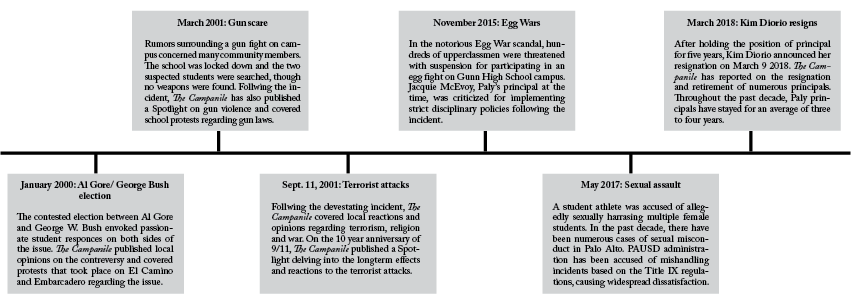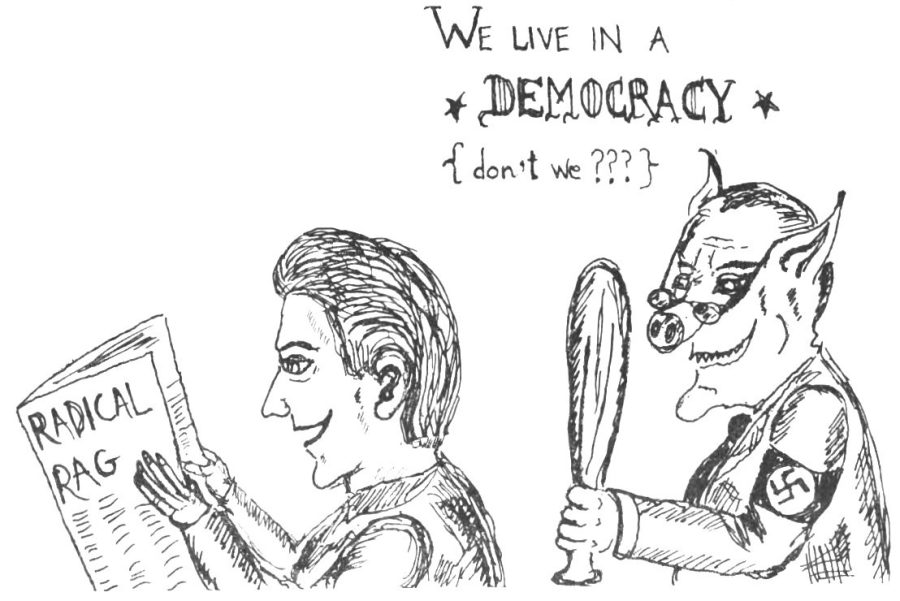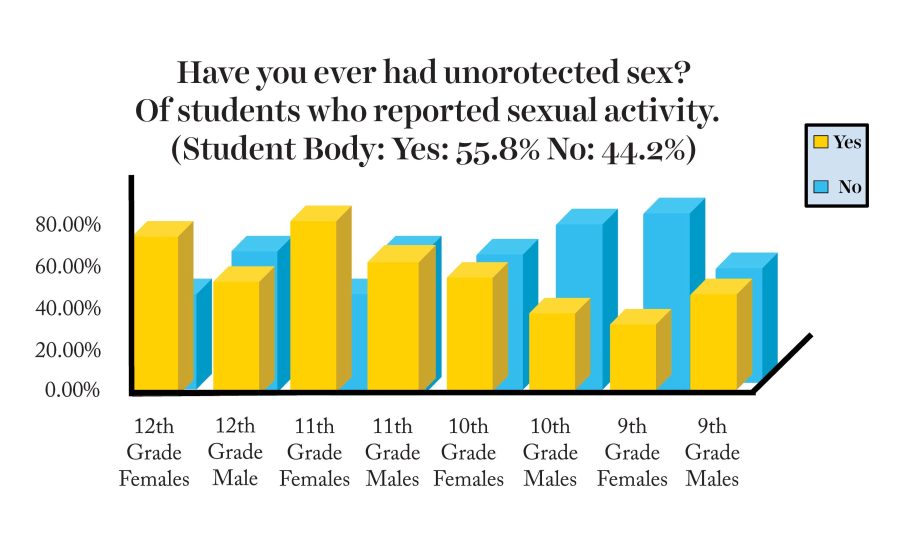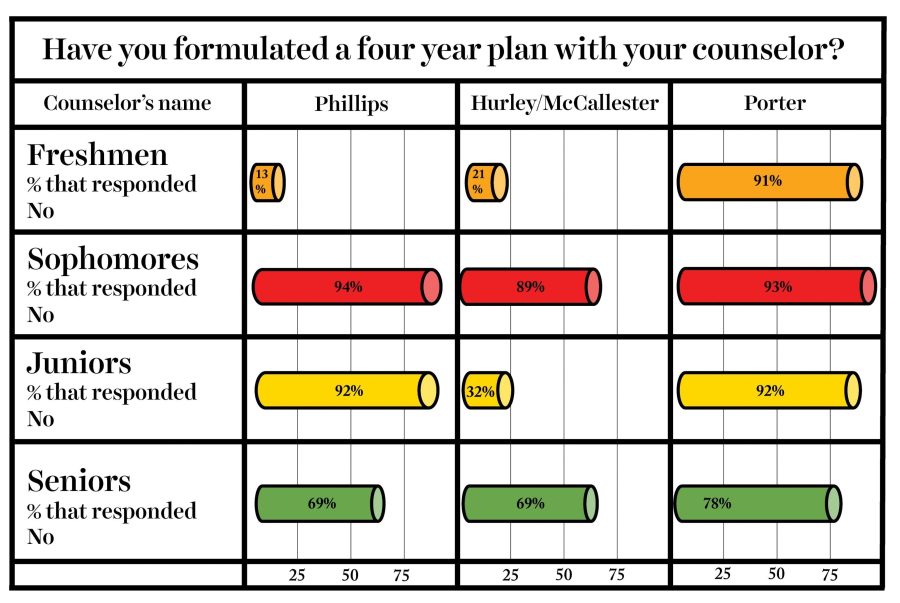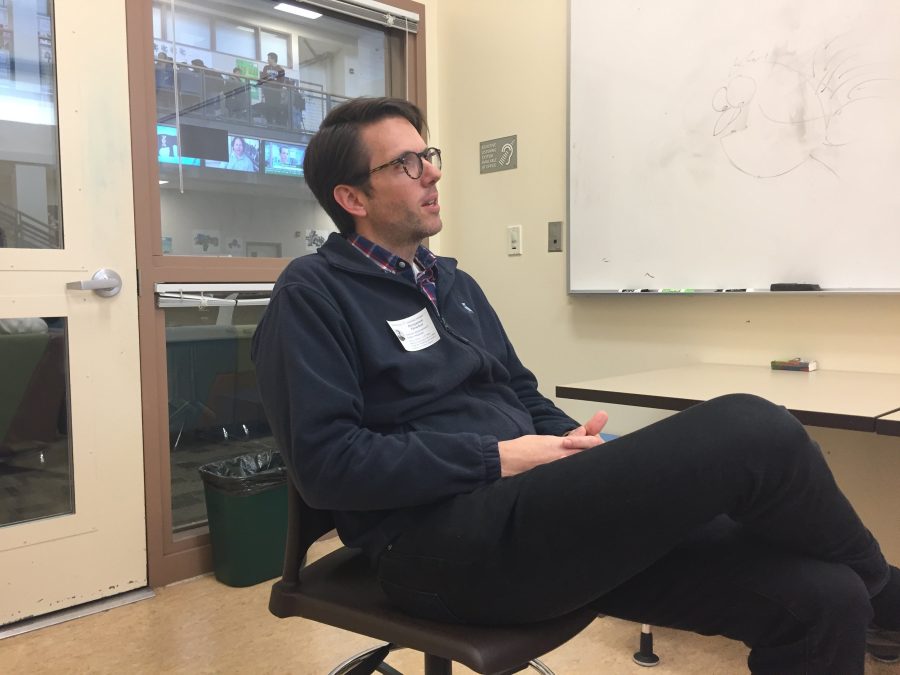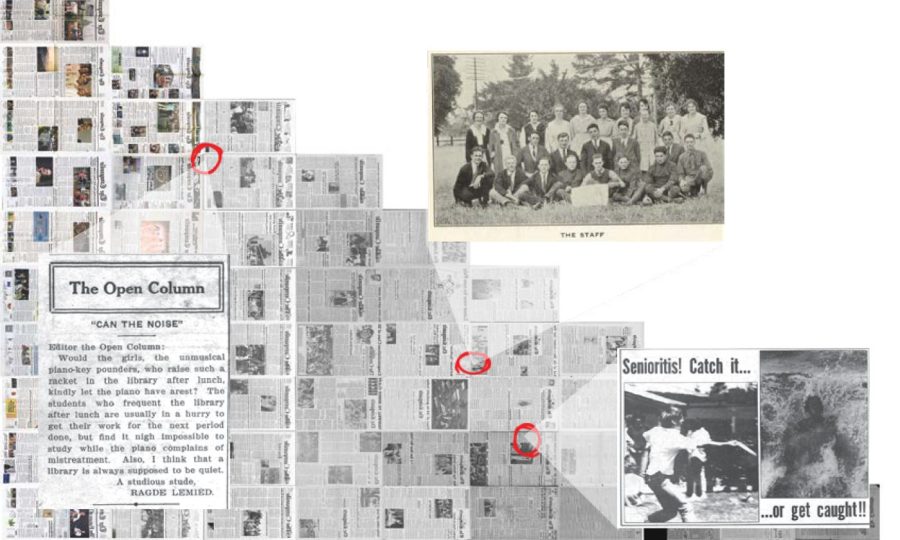[divider]Sept. 11 terrorist attacks[/divider]
Following the devastating terrorist attacks on Sept. 11, 2001, The Campanile set out to cover students’ reactions. Through a multitude of articles and verbatim pieces, The Campanile highlighted the local effects and opinions regarding the globally devastating event.
A verbatim piece in The Campanile, published on Dec. 3, 2001 asked students what they thought about the emphasis on religion since the Sept. 11 attacks.
The article captured the optimistic and inclusive views of the student body, featuring various students who condemned bigotry and encouraged a united front.
Alumnus Neeraj Miglani, a sophomore at the time of the article, said, “we’re all U.S. citizens. And we’re all in this together, so we need to drop the racist comments and focus on uniting as one.” Similarly, alumna Maayan Ben-Artzi said, “I don’t agree with it, because they are singling out people and religions, and it’s going against everything America says it stands for.”
In another verbatim piece, written by Corey Miller and published in on Sept. 30, 2002, The Campanile reported on various students and their perceptions of terrorism and the war on terror. Alumnus Ryan Kutz provided a humorous response, stating that “terrorists are everywhere. They are in your cheeseburger.”
Other students provided more nuanced interpretations, however, and discussed possible faults with the U.S.’s current response to terrorism. Though individual views differed, the students presented a general consensus that the threat of terrorism had increased and that immediate action was required.
In one such example, alumnus Sathvik Tantry said, “terrorism isn’t something you can squish. You can’t destroy or make it go away without actively taking a resolution in what they want … We can’t just use violence. ”
In addition to covering the local response to the Sept. 11 attacks,The Campanile also reported on international reactions to the event. In an article written by alumnus Corey Miller, published on Sept. 30 2002, The Campanile asked teens from around the globe to share their opinions about a variety of Sept. 11 related topics.
Throughout the article, Miller reflected upon several international responses to the terrorist attacks on Sept. 11, and how people from other nations perceived America differently following the devastating incident.
“It was not just Americans or those living in America who felt as if they had been attacked,” Miller said in the article. “Responses confirmed the notion that most people viewed the terrorist strikes as attacks not on America, but on the world and on humanity in general.”
Miller referenced quotes from students from a myriad of countries, including South Africa, Britain and Australia.
“I think each person in the world, no matter where they live, was personally affected by Sept. 11.”
Deline Drury, of Pretoria, South Africa
On the one year anniversary of the attacks, The Campanile reflected upon the drastic impact of the terrorist attacks. In a Spotlight titled “One year later: How 9/11 changed the world,” published on Sept. 30 2002, alumna Laura Gaynon said, “today’s Paly students live in a far different world than those of the past. Increased security, threat of global economic troubles and the shadow of war are now undeniable aspects of modern American life.”
[divider]Suicide Clusters[/divider]
In a town where many students are overcome with pressure, mental health and suicide have become recurring issues in the Palo Alto Community.
Starting in 2009, there have been two major teen suicide clusters in Palo Alto, affecting the community as a whole.
In the first cluster, the community witnessed the deaths of four students who attended Gunn High School as well as two other local teens over a 7 month span during the 2008-2009 school year.
In the second cluster, four students died by suicide between October 2014 and March 2015.
The suicides plaguing Palo Alto undeniably elicited an emotional response from the student body. However, The Campanile recognized the need to grieve and refrained from publishing editorials regarding the topic.
In a Letter from the Editors published on February 6 2015, the editorial board explained The Campanile’s decision regarding their journalistic response to recent events.
The letter stated, “In wake of the tragic events that have affected our community, the staff of The Campanile has chosen to refrain from publishing any editorial comment regarding the topic of suicide . . . We understand the obligations of The Campanile as a member of the Palo Alto High School journalistic body; however, we believe that the best course of action in the months to come is to prevent harmful speculation and to allow time for grief and recovery.”
Following these clusters, the district enacted new policies to prevent further tragedy.
The Campanile ensured that the newspaper would not publish emotional articles in response to the suicides. Instead, they only published stories regarding actions taken by the district.
On May 20, 2015, The Campanile published an article titled “Cameras to be installed near train.”
The article covered the district’s decision to install cameras by the CalTrain tracks. These cameras were not installed to act alone, only to assist the security guards who are stationed on the tracks.
The article explained, “Implementing a new automated camera system will extend visibility of the tracks and also notify guards of anything or anyone on the tracks in a more timely manner. The cameras will be able to alert guards the moment an individual steps onto the tracks. This will ensure that public safety officials have enough time to arrive at the Caltrain tracks in order to resolve possible issues.”
The article also included the opinions of Palo Alto Unified School District (PAUSD) students. “I also think that the response time will not be quick enough to stop anyone from committing suicide,” Former Gunn student Kathleen Ji said. “If someone knew exactly what they wanted to do, they’d be able to jump before anyone could respond to the video. I do applaud the city’s efforts though; this is definitely a step in the right direction.”
In an article published by The Campanile on February 29, 2016 titled “CDC Investigating Palo Alto suicides,”The Campanile explained the actions being conducted by the Center for Disease Control (CDC) within the district.
The article states, “The Centers for Disease Control and Prevention (CDC) is currently conducting an epidemiological study on Palo Alto’s recent suicide clusters in order to address and mitigate Santa Clara County’s problem of youth suicide after a formal request from the county and state public health departments last March.”
Although the CDC’s studies were put in place to find the root of the suicide problem in Palo Alto, The Campanile explained that some community members doubt the effectiveness of the studies, as student opinion is not being looked at.
Former Henry M. Gunn High school English teacher expressed his concern in the article, “I understand that this study has an emphasis on collecting data, and it’s not the fault of the CDC that that is the nature of this study,” Vincenti said. “I think that the mistake is in people being allowed to think of this study as something that will make a profound difference for this district. The study’s shortcomings are fairly obvious in that the researchers … will not be interviewing a single teenager in Palo Alto. … You can’t do a study of teenage suicide in Palo Alto and not talk to a single teenager. It just does not make sense.”
In attempt to promote mental health and prevent another cluster, schools within the district have also established many mental health related programs.
In an article published on November 20, 2015, titled “Program emphasizes mental well-being,” The Campanile informed students about the new “Sources of Strength” program.
According to the article, “The implementation of the Sources of Strength program has been divided into two parts: establishing adult advisors and peer leaders and starting student-led projects throughout the school known as “campaigns.”’
The piece “Program emphasizes mental well-being” also voiced the opinions of administrators involved in the program. “Part of what we’re trying to do is trying to change the narrative from ‘Palo Alto is the place for suicides’ or ‘Palo Alto is the community where everybody gets so stressed out that they have to jump in [front of] trains’ to ‘[Palo Alto’s] culture is the place filled with resilience,’” Paly’s Mental and Health and Wellness Coordinator Jonathan Frecceri said.
Since the first suicide cluster, the Palo Alto community has enforced many new policies and reforms in order to increase mental health awareness and help students cope with grief.
Although some doubt the effectiveness of said programs, the community has become aware of the challenges students face in the school environment and ramifications that can come as a result.
“We as a community, as well as a society, should be making sure that people understand that like [for] any other health condition, there is treatment and help, and that students and teenagers can avail themselves to the services or people that can help them,” Diorio said.
[divider]Sexual Misconduct[/divider]
In recent years, PAUSD has been riddled with sexual assault scandals. As these accusations and cases became publicly known, student journalists at The Campanile have worked to examine these cases from a student perspective and inform the student body.
On June 2 2017, The Campanile published an article titled “A Muddled Mystery: Sexual Assault Allegations Roil District.”
Campanile writers extensively reported on the known information about the 2016 sexual assault case, as well as community reactions to the incident.
In the issue mentioned, the article “A Muddled Mystery: Sexual Assault Allegations Roil District,” states, The Campanile has uncovered more accurate information that clarifies the situation: The student had been convicted in juvenile court of “oral copulation by force, violence, duress, menace or fear” for the incident at the church, and of consensual sex with a minor, not sexual assault, for the incident on Paly’s campus.”
Shortly after the sexual assault case came to light, news came of the administrations mishandling of the situation. In the article, “Paly principal releases formal disciplinary letter from District”, published on March 7 2018, the errors made by Principal Kim Diorio were outlined.
The article explained, “The letter of reprimand, sent to Diorio by Interim Assistant Superintendent Anne Brown, states that, among other mistakes, Diorio and other school administrators failed to interview all relevant witnesses to the incident in question, including both students involved.”
The article clarified many assumptions made my community members who were upset by the handling of the case.
Though this case in particular received an abundance of media attention, the 2017 case was not the first time Paly has been under scrutiny for sexual misconduct.
In an article titled “The PAUSD Predicament: Sexual Misconduct,” The Campanile delved into previous cases of sexual harassment and assault that involved PAUSD employees.
Within the article, the different cases were outlined. “Sexual misconduct should never occur, and yet it has continued to plague the District. Former Palo Alto High School principal Phil Winston was disciplined for inappropriate verbal and physical behavior towards students and resigned in June 2013. Paly English teacher Kevin Sharp resigned in November 2015 after having an inappropriate relationship with a recently graduated student . . . Most recently, Paly chemistry and biology teacher Ronnie Farrell was taken into custody on June 15 for allegedly groping a 15-year-old girl in his classroom on campus.”
Throughout the past two decades, there have been numerous cases of sexual misconduct involving students and staff.
Despite a multitude of attempts for improvement, sexual harassment incidents are unfortunately still prevalent in our community.

